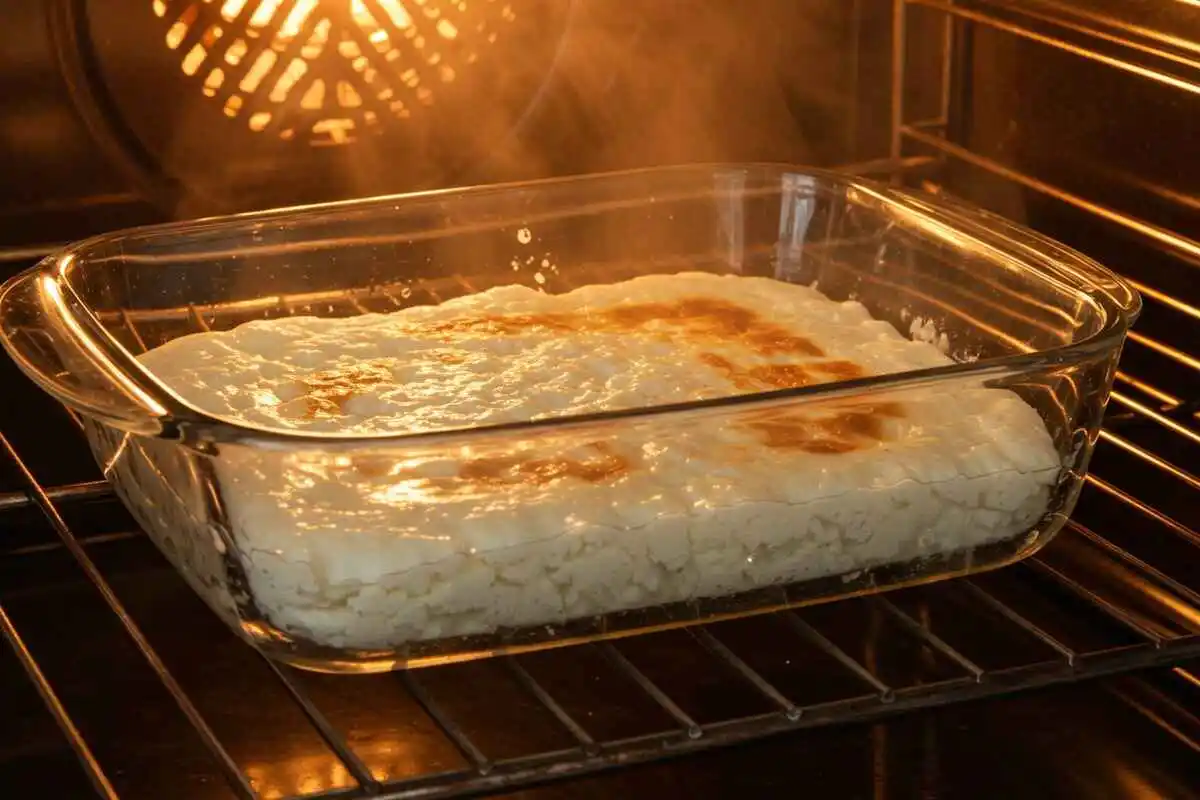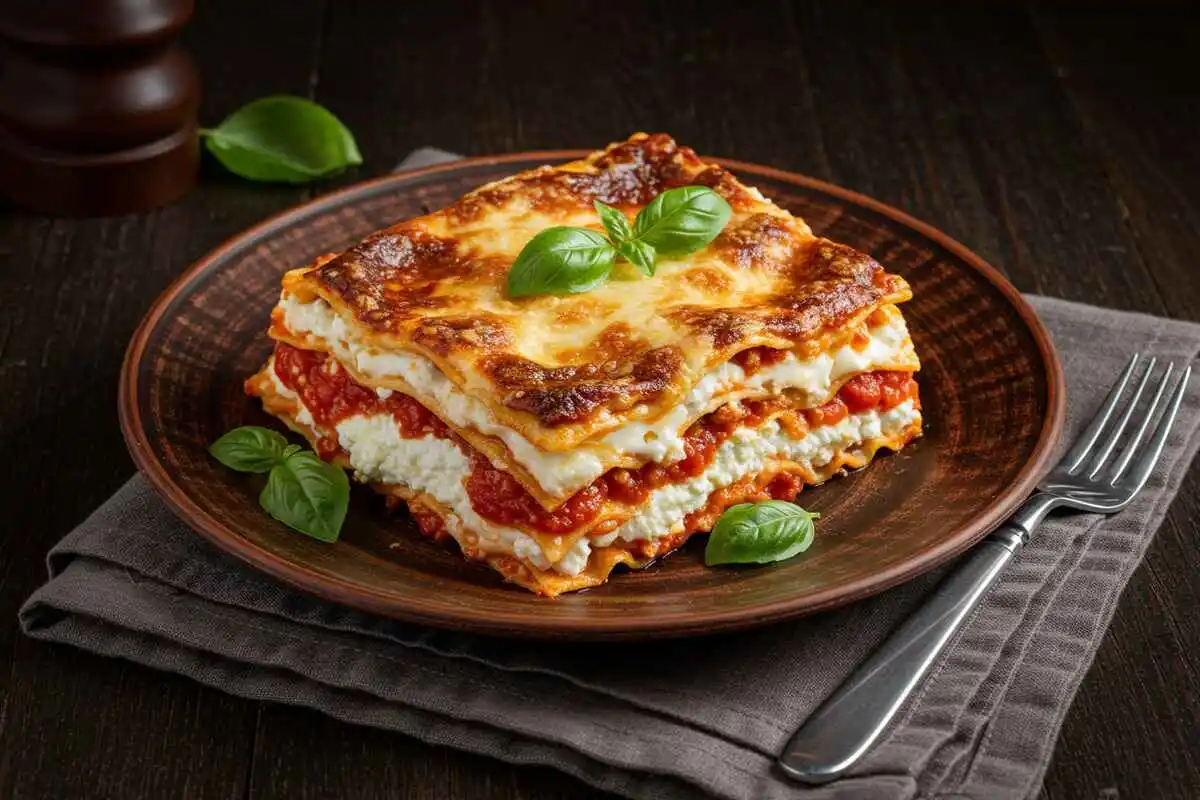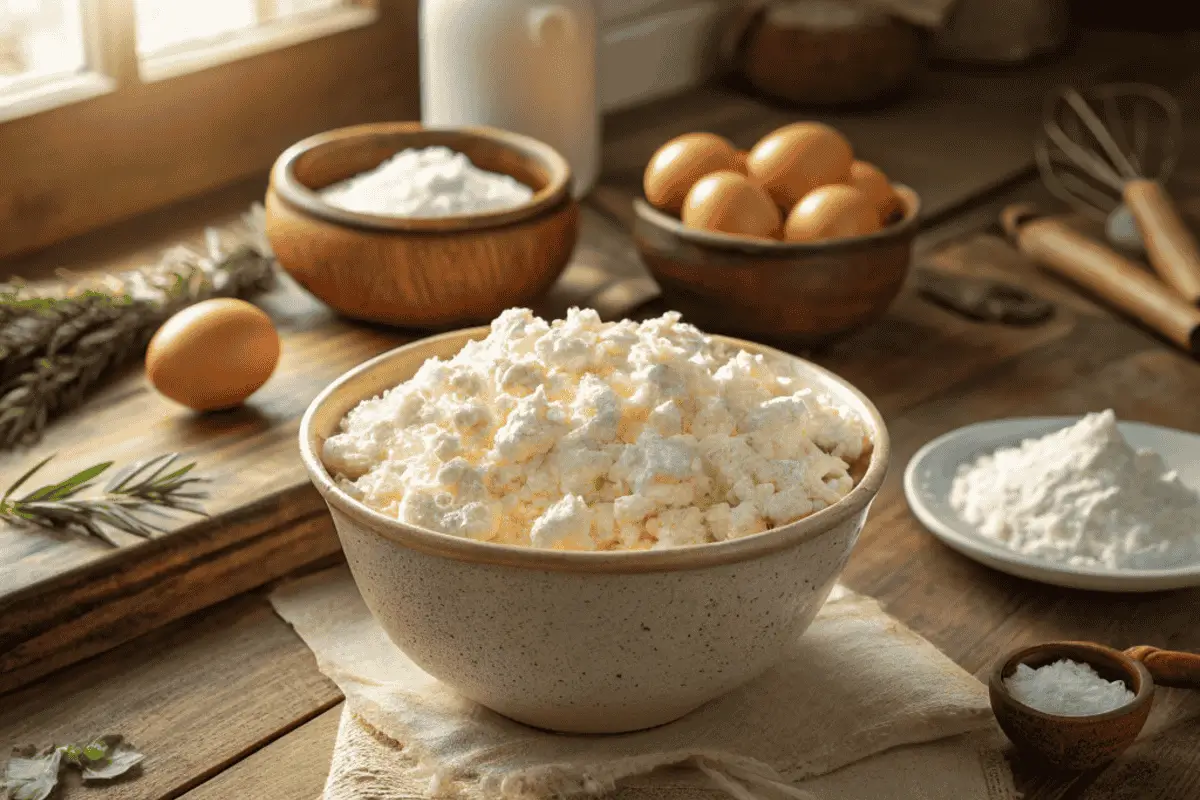Introduction
Cottage cheese is a beloved dairy product known for its creamy texture and versatility. Whether used as a healthy snack, a salad topping, or an ingredient in recipes, it offers a unique flavor profile that appeals to many. However, one question frequently arises: Does cottage cheese melt in the oven?
Understanding how cottage cheese behaves when heated is essential for home cooks and baking enthusiasts. From savory casseroles to sweet pastries, many recipes involve heating or baking with this cheese, making it vital to know its properties. In this article, we’ll dive into the science of cheese melting, explore cottage cheese’s characteristics, and provide tips for using it effectively in your kitchen.
What Is Cottage Cheese?
Cottage cheese is a fresh cheese made from the curds of cow’s milk. Unlike aged cheeses, it is minimally processed and retains a mild, tangy flavor. Its defining characteristic is its lumpy texture, which results from the separation of curds and whey during the cheese-making process.
Unlike harder cheeses like cheddar or gouda, cottage cheese contains a higher moisture content, which impacts its behavior when heated. It is also available in various fat levels, including full-fat, low-fat, and fat-free varieties, each with its own culinary applications.
Why This Question Matters: Practical Uses
Understanding whether cottage cheese melts in the oven can make or break a recipe. For instance:
- Savory dishes like lasagna or casseroles often require a creamy, melted texture to bind ingredients.
- Baking enthusiasts use cottage cheese in pastries and breads for moisture and richness.
Knowing how cottage cheese reacts to heat ensures you can achieve the desired results in your cooking endeavors.
Understanding Cottage Cheese
To fully grasp whether cottage cheese melts in the oven, we must first understand its composition and how it differs from other cheeses.
How Is Cottage Cheese Made?
Cottage cheese is made by curdling milk with an acidic substance such as vinegar or lemon juice. This process separates the milk solids (curds) from the liquid whey. The curds are then rinsed and salted to create the finished product.
The simplicity of this process results in a cheese that is fresh, soft, and packed with nutrients. Unlike aged cheeses, which undergo fermentation and aging, cottage cheese remains unfermented, retaining a higher water content.
Composition of Cottage Cheese
Cottage cheese is rich in protein and low in fat (depending on the variety). Its high water content, combined with a lack of aging, affects how it behaves when heated:
- Moisture Content: Cottage cheese contains around 80% water, making it less likely to melt compared to drier cheeses.
- Fat Content: Higher-fat varieties may soften slightly when heated, but they still won’t achieve the gooey texture of melting cheeses like mozzarella.
- Protein Structure: The protein bonds in cottage cheese are not broken down during heating, which explains why it doesn’t melt smoothly.
Varieties and Types of Cottage Cheese
There are several types of cottage cheese, each suited to different culinary applications:
- Small Curd: Ideal for mixing into salads or using as a topping.
- Large Curd: Preferred for recipes where texture is important, such as baked dishes.
- Low-Fat and Fat-Free: Popular for those seeking a healthier option, though these varieties may be less creamy.
- Full-Fat: Rich and creamy, suitable for indulgent recipes.
Understanding these variations helps determine the best type of cottage cheese to use based on your specific cooking or baking needs.
The Science of Cheese Melting
To understand why cottage cheese behaves the way it does when heated, we need to delve into the science of cheese melting.
Why Do Some Cheeses Melt?
Cheese melting is a fascinating process driven by its composition. When heat is applied, the proteins in the cheese break down, allowing the fat and moisture to create the creamy texture we associate with melted cheese. However, not all cheeses are created equal:
- High-Fat Cheeses: Cheeses like cheddar and gouda melt easily because their high-fat content softens and binds the texture when heated.
- Low-Moisture Cheeses: Mozzarella and provolone are low in water but melt beautifully due to their protein structure.
- Aged Cheeses: The aging process breaks down proteins, making these cheeses easier to melt.
Cottage cheese, in contrast, lacks these characteristics, which is why it doesn’t melt in the traditional sense.
Factors That Affect Melting
Several factors determine whether a cheese will melt smoothly or retain its structure:
- Moisture Content: Higher water content, as in cottage cheese, prevents the cheese from melting uniformly.
- Fat Content: Fat helps create a gooey texture. Cottage cheese, especially low-fat versions, lacks sufficient fat for this process.
- Age: Younger, fresh cheeses like cottage cheese are less likely to melt than aged varieties.
- Acidity: Cottage cheese is slightly acidic, which affects the protein structure and limits melting.
Cottage Cheese vs. Other Cheeses
Unlike melting cheeses such as mozzarella or gruyere, cottage cheese is closer in behavior to ricotta or paneer. It softens slightly when heated but doesn’t achieve a smooth, melted consistency. This makes it better suited for specific culinary applications, such as adding creaminess to dishes without the need for melting.
Does Cottage Cheese Melt in the Oven?
Let’s address the central question directly: Does cottage cheese melt in the oven?

Direct Answer to the Question
No, cottage cheese does not melt in the oven. When exposed to heat, it softens and releases some moisture but retains its lumpy, curd-like texture. This is due to its high water content and protein structure, which prevents it from melting in the traditional sense.
What Happens When Heated in the Oven?
When baked or heated, cottage cheese undergoes the following changes:
- Softening: The curds may soften slightly, creating a creamy texture, especially if mixed with other ingredients.
- Moisture Release: Water from the cheese may evaporate or blend into the dish, depending on the temperature and baking time.
- Browning: If baked for extended periods, the curds may brown slightly, adding a subtle caramelized flavor.
While it doesn’t melt, these changes can enhance the overall flavor and texture of your dish.
Visual and Textural Changes
Cottage cheese behaves differently in various dishes:
- In Lasagna or Casseroles: It combines with other ingredients to create a creamy base, even if it doesn’t melt.
- In Pastries or Bread: It adds moisture and richness to the dough, giving baked goods a tender crumb.
- Standalone Baking: When baked alone, cottage cheese remains largely intact but may develop a slightly firmer texture.
These characteristics make it a versatile ingredient despite its inability to melt like other cheeses.
Culinary Applications
Cottage cheese may not melt in the oven, but its unique texture and flavor make it an excellent addition to a variety of dishes. Below, we explore its use in both savory and sweet recipes.
Using Cottage Cheese in Baking
Cottage cheese is a hidden gem in the world of baking. Its high moisture content and mild tang contribute to soft, tender baked goods:
- Breads and Rolls: Incorporating cottage cheese into dough results in soft and flavorful bread with a moist crumb.
- Muffins and Pancakes: Cottage cheese adds a rich, creamy texture without overpowering the flavor.
- Cheesecakes: While it doesn’t melt, cottage cheese can be blended to create a smooth, creamy base for cheesecakes.
Savory Dishes: Recipes That Use Cottage Cheese
Cottage cheese is a versatile ingredient in savory dishes. It can be used as a filling, a topping, or a key ingredient in recipes such as:

- Lasagna: Use cottage cheese as a creamy layer in place of ricotta. While it won’t melt, it blends beautifully with other ingredients.
- Casseroles: Combine cottage cheese with vegetables, pasta, or rice for a rich and hearty dish.
- Stuffed Vegetables: Fill bell peppers, zucchini, or eggplants with a mixture of cottage cheese, herbs, and spices for a delicious bake.
Sweet Recipes Featuring Cottage Cheese
Cottage cheese shines in desserts as well. Its mild flavor complements sweet ingredients, making it an ideal choice for:
- Blintzes: A traditional dish where cottage cheese is used as a creamy filling for thin pancakes.
- Puddings: Combine cottage cheese with fruits and honey for a simple, sweet dessert.
- Smoothies: Blend cottage cheese with fruits and a touch of sweetener for a high-protein, creamy smoothie.
Tips for Cooking with Cottage Cheese
While cottage cheese doesn’t melt, there are ways to enhance its usability and adapt it for different recipes.
Substituting Cottage Cheese
If you’re out of cottage cheese or want a smoother texture, consider these substitutes:
- Ricotta Cheese: Slightly creamier and smoother, ricotta works well in most recipes where cottage cheese is used.
- Greek Yogurt: For a tangy flavor, Greek yogurt is a healthy alternative.
- Mashed Tofu: For a vegan option, soft tofu mimics the texture of cottage cheese in many dishes.
Combining It with Other Ingredients for Better Texture
To create a smoother texture, consider blending cottage cheese before using it in recipes. A quick blend in a food processor or blender will break down the curds, resulting in a creamier consistency suitable for:
- Cheesecakes and Pies
- Soups and Sauces
Enhancing Flavor While Baking
Cottage cheese is mild on its own, but you can boost its flavor by:
- Adding Herbs and Spices: Mix in garlic, basil, or paprika for a savory twist.
- Incorporating Sweeteners: Use honey, maple syrup, or vanilla for sweet applications.
- Using Accompaniments: Pair cottage cheese with fresh fruits, nuts, or chocolate for added depth.
These tips ensure that cottage cheese enhances your dishes, even if it doesn’t melt.
Common Misconceptions
Despite its popularity, there are several misconceptions about cottage cheese, particularly regarding its culinary uses and characteristics. Let’s clear up these myths.
Cottage Cheese Is Only for Diets
One common belief is that cottage cheese is exclusively a diet food. While it’s true that cottage cheese is a staple in many low-calorie meal plans, its uses extend far beyond weight loss:
- Nutrient-Rich: Cottage cheese is packed with protein, calcium, and essential vitamins, making it a great choice for anyone.
- Versatility: From smoothies to casseroles, it’s a versatile ingredient that enhances a wide range of dishes.
- Full-Fat Options: For those seeking a richer flavor, full-fat cottage cheese is an indulgent option that works well in desserts and savory recipes alike.
Cottage Cheese Is a Direct Mozzarella Substitute
Another misconception is that cottage cheese can be directly substituted for mozzarella in recipes like pizzas or pastas. While both are cheeses, their properties differ significantly:
- Texture: Mozzarella melts into a gooey, stretchy consistency, whereas cottage cheese softens but retains its curd structure.
- Moisture: Cottage cheese releases more moisture during cooking, which can affect the final texture of a dish.
- Flavor: Mozzarella has a mild, creamy taste, while cottage cheese has a slightly tangy flavor that may not suit every dish.
Myths About Cottage Cheese’s Versatility
Many people underestimate the versatility of cottage cheese, assuming it’s limited to salads or snack plates. However, it’s a hidden gem in the kitchen:
- Savory Applications: Cottage cheese works well in soups, stews, and baked dishes, adding creaminess without overpowering the flavor.
- Sweet Dishes: It’s a perfect ingredient for cheesecakes, pancakes, and desserts.
- Culinary Hacks: Blended cottage cheese can be used as a low-fat alternative to cream in sauces and dips.
Dispelling these misconceptions reveals the true potential of cottage cheese as a staple ingredient.
Expert Opinions
Professionals in the culinary and nutrition fields provide valuable insights into how to best use cottage cheese in your cooking and baking endeavors.
Insights from Chefs
Chefs often highlight the adaptability of cottage cheese in recipes:
- Chef Emily Carter: “Cottage cheese adds a unique texture to casseroles and lasagnas. While it doesn’t melt, it creates a creamy base when combined with other ingredients.”
- Chef Anthony Vega: “Blending cottage cheese transforms it into a smooth, creamy ingredient perfect for cheesecakes or dips. It’s an affordable alternative to ricotta.”
Professional chefs emphasize experimenting with cottage cheese in different ways to discover its full potential.
Nutritionists’ Take on Cottage Cheese in Recipes
From a nutritional standpoint, cottage cheese is highly regarded for its health benefits:
- Rich in Protein: According to dietitian Sarah Jacobs, “Cottage cheese is an excellent source of protein, making it a great choice for muscle repair and growth.”
- Low in Carbs: It’s a suitable option for those following low-carb or ketogenic diets.
- Calcium Boost: Nutritionist Amanda Lee notes, “Cottage cheese provides a significant amount of calcium, essential for strong bones and teeth.”
By incorporating cottage cheese into meals, you can create dishes that are not only delicious but also packed with nutrients.
FAQs Section
In this section, we address some of the most frequently asked questions about heating and cooking with cottage cheese.
Can You Heat Cottage Cheese in the Oven?
Yes, you can heat cottage cheese in the oven. While it won’t melt like mozzarella or cheddar, it softens and releases some moisture. This makes it an excellent choice for baked dishes such as casseroles, lasagna, and stuffed vegetables.
Does Cottage Cheese Melt When You Cook It?
No, cottage cheese doesn’t melt when cooked. Its high moisture content and protein structure prevent it from achieving the gooey, stretchy texture associated with melting cheeses. Instead, it softens and integrates into dishes, adding creaminess.
What Does Cottage Cheese Do in Baking?
Cottage cheese enhances the texture and flavor of baked goods. Its moisture content keeps breads and cakes soft, while its mild tang adds depth to both sweet and savory recipes. Blending cottage cheese creates a smoother consistency, making it suitable for cheesecakes and other creamy desserts.
Why Won’t My Cottage Cheese Melt?
Cottage cheese won’t melt because of its composition. Unlike melting cheeses, it contains a high percentage of water and a protein structure that doesn’t break down under heat. This characteristic makes it ideal for recipes where creaminess is desired without the need for melting.
Conclusion
Summary of Findings
Cottage cheese is a versatile and nutrient-rich ingredient that behaves differently from traditional melting cheeses. While it doesn’t melt in the oven, it offers unique qualities that enhance a variety of dishes. From its ability to soften and release moisture to its role in adding creaminess to baked goods, cottage cheese proves itself as a valuable component in both sweet and savory recipes.
Final Thoughts and Recommendations
Understanding the behavior of cottage cheese when heated opens up a world of culinary possibilities. Whether you’re creating a creamy lasagna, experimenting with desserts, or simply enjoying it as a snack, cottage cheese offers a delightful combination of flavor, texture, and health benefits.
For the best results, consider blending cottage cheese for a smoother texture or combining it with complementary ingredients to enhance its flavor. With its versatility and nutritional value, cottage cheese deserves a spot in every kitchen.
More Delicious Recipes

